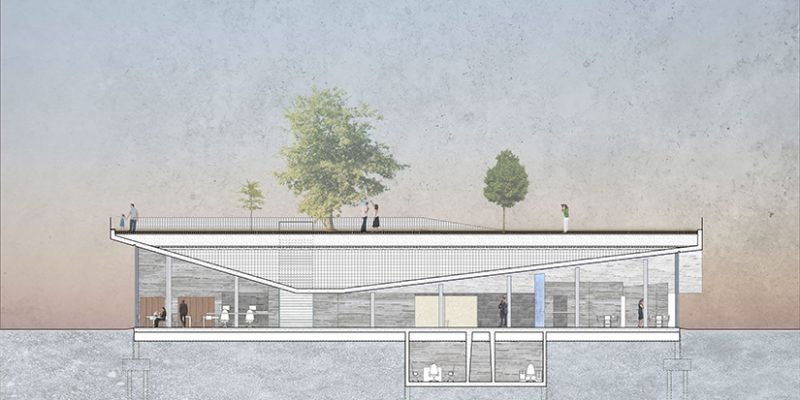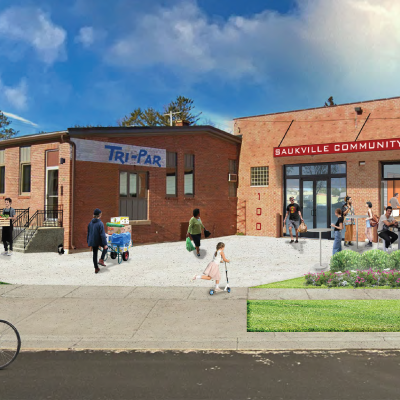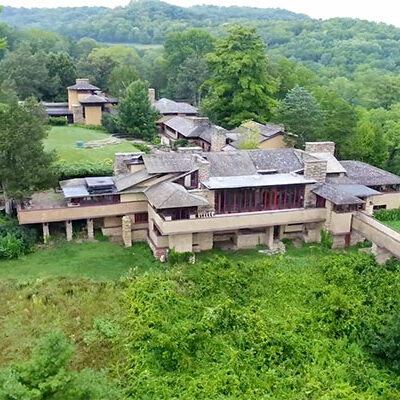The occupants and users of this building are intimately involved with the design, use, efficiency, look and maintenance of environments. If anyone can appreciate the benefits of creating an environment conducive to productive and collaborative work the users of this building are such individuals and should respect efforts to maintain it as such. These policies are an attempt to make our environment as comfortable, efficient and aesthetic as possible.
Tools and Materials
Spray paint and spray adhesives are prohibited from use by SARUP faculty, staff and students within the building, its approaches and grounds.
Students may use the following personally‐owned output devices in SARUP studio rooms: tabletop inkjet and laserjet printers, tabletop FDM (fused deposition modeling) 3D printers – using PLA (polylactic acid) filament and not ABS (acrylonitrile butadiene styrene) filament, and tabletop die cutters with enclosure hoods. Laser cutters and CNC routers of any kind shall not be allowed in studio rooms.
Students may include foam in SARUP studio projects (e.g., models, prototypes, presentation boards), as long as they do so in a manner respectful of others and the facilities, and in accordance with established safety protocols, including protocols for proper vacuuming, bagging and disposal of foam dust. Students shall not saw, carve or sand foam while in studio rooms. Acetone and Styrene are not allowed. Nor is using burning or heat processes to modify foam. Polystyrene is allowed and its recycling is encouraged.
The use of aerosol spray adhesives and paint is not allowed in the SARUP building or on SARUP grounds (including stairwells, sidewalks, and grass). Use such products at home and only with proper ventilation. Use respiratory and eye protection as indicated on the label.
Any material spilled on SARUP property should be cleaned immediately, before it dries.
Use of plaster is not allowed. Use an alternative medium such as Hydrocal, CementAll, or Rockite. When using loose powder model-building material, such as Rockite, all loose powder should be removed from studio surfaces including tabletops and floors. Do NOT callow casting mediums such as Rockite or wax, etc to contact sink or toilet fixtures and pipes. Casting materials should never be washed down a drain even in small amounts. It will destroy the plumbing and you will be charged for expensive repairs. Dispose of extra casting materials in a container you can throw away such as a used 2-liter soda bottle.
When disposing of materials in studio trashcans, give consideration to the weight of the trash. If a trashcan becomes too heavy, it will not be emptied by the custodians causing a trash backup in the studio. To avoid this, students shall take heavy debris and large scraps directly to the SARUP dumpsters themselves.
Limited use of power tools in studios is permitted. Prior permission from instructor and notification of William Krueger and Matt Mabee is required.
Use of flames (such as bunsen burners or blow torches) in studio is not allowed. Do this kind of work at home in a garage or outside.
Use the sharps disposal containers in studio. Do NOT place used blades into the trash can.
Studio Debris
Custodians have been informed that any items on the floors in Studios at the end of the day are to be considered trash and available for immediate disposal UNLESS they are clearly marked for saving and student use. The item(s) should be marked by student name and date in a clearly visible area of the material.
Public Notices
Permission to post announcements should be obtained from the School’s administrative offices. Individuals posting Architecture and/or Urban Planning related notices should obtain prior permission to post notices from the respective departmental offices. Notices of a general or School-wide nature should receive permission from the SARUP administrative unit. Push pins should be used to attach notices in prescribed areas. Items are not to be posted on building columns or glass areas. Notices which have a date of a specific event should be promptly removed after the event has occurred. Notices which do not indicate an upcoming, fixed date of an event must indicate on the notice the date of its initial posting. This is so the notice can be monitored and removed on a timely basis before it becomes a permanent fixture of the building.
Public Displays
Permission should be sought via the procedures listed above for public displays in corridors and public areas with the added requirement that permission must be obtained from both the respective Department and the School’s administration. This is to help provide coordination of displays and assure adequate space to meet
everyone’s needs. Push pins or the building’s hanging system should be used for displays. The movable presentation panels need to be reserved in advance, picked up for use and promptly returned to their storage areas so others can make use of this ad hoc display system.
Furnishings in Public Areas
Furnishing in public areas (Commons, Studios, classrooms, meeting rooms, etc.) are to be kept within those areas. They should be maintained in a clean and orderly manner. If the need to move these items within their prescribed areas arises due to temporary programmatic activities these items are to be restored to their proper condition and location immediately after use by the user(s) who moved them. Removing furnishings from their prescribed areas for temporary storage elsewhere requires prior notification of the Building Chair or his/her representative.
Corridor and Corridor Alcove Storage
The building corridors and north wing alcoves are not to be used for storage of furniture, display materials, completed studio projects, etc. This can present a trip hazard or fire code violation.


